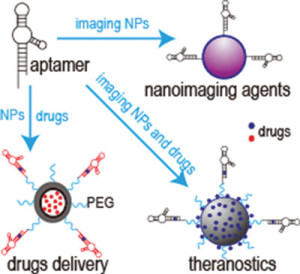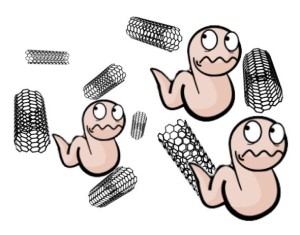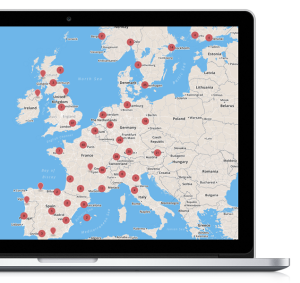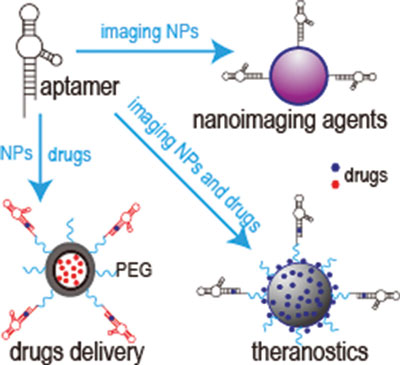A Feb. 17, 2015 Northwestern University news release by Hilary Hurd Anyaso (also on EurekAlert) features research suggesting that parity in the numbers of men and women students pursuing science degrees is being achieved,
Scholars from diverse fields have long proposed that interlocking factors such as cognitive abilities, discrimination and interests may cause more women than men to leave the science, technology, engineering and mathematics (STEM) pipeline after entering college.
Now a new Northwestern University analysis has poked holes in the much referenced “leaky pipeline” metaphor.
The research shows that the bachelor’s-to-Ph.D. pipeline in science and engineering fields no longer leaks more women than men as it did in the past
Curt Rice, a professor at Norway’s University of Tromsø, has challenged the findings in a Feb. 18, 2015 post on his eponymous website (more about that later).
The news release goes on to describe how the research was conducted and the conclusions researchers drew from the data,
The researchers used data from two large nationally representative research samples to reconstruct a 30-year portrait of how bachelor’s-to-Ph.D. persistence rates for men and women have changed in the United States since the 1970s. For this study, the term STEM persistence rate refers to the proportion of students who earned a Ph.D. in a particular STEM field (e.g. engineering) among students who had earlier received bachelor’s degrees in that same field.
They were particularly surprised that the gender persistence gap completely closed in pSTEM fields (physical science, technology, engineering and mathematics) — the fields in which women are most underrepresented.
Among students earning pSTEM bachelor’s degrees in the 1970s, men were 1.6 to 1.7 times as likely as women to later earn a pSTEM Ph.D. However, this gap completely closed by the 1990s.
Men still outnumber women by approximately three to one among pSTEM Ph.D. earners. But those differences in representation are not explained by differences in persistence from the bachelor’s to Ph.D. degree, said David Miller, an advanced doctoral student in psychology at Northwestern and lead author of the study.
“Our analysis shows that women are overcoming any potential gender biases that may exist in graduate school or undergraduate mentoring about pursing graduate school,” Miller said. “In fact, the percentage of women among pSTEM degree earners is now higher at the Ph.D. level than at the bachelor’s, 27 percent versus 25 percent.”
Jonathan Wai, a Duke University Talent Identification Program research scientist and co-author of the study, said a narrowing of gender gaps makes sense given increased efforts to promote gender diversity in science and engineering.
“But a complete closing of the gap was unexpected, especially given recent evidence of gender bias in science mentoring,” Wai said.
Consequently, the widely used leaky pipeline metaphor is a dated description of gender differences in postsecondary STEM education, Wai added.
Other research shows that gaps in persistence rates are also small to nonexistent past the Ph.D., Miller said.
“For instance, in physical science and engineering fields, male and female Ph.D. holders are equally likely to earn assistant professorships and academic tenure,” Miller said.
The leaky pipeline metaphor is inaccurate for nearly all postsecondary pathways in STEM, Miller said, with two important exceptions.
“The Ph.D.-to-assistant-professor pipeline leaks more women than men in life science and economics,” he said. “Differences in those fields are large and important.”
The implications of the research, Miller said, are important in guiding research, resources and strategies to explain and change gender imbalances in science.
“The leaking pipeline metaphor could potentially direct thought and resources away from other strategies that could more potently increase women’s representation in STEM,” he said.
For instance, plugging leaks in the pipeline from the beginning of college to the bachelor’s degree would fail to substantially increase women’s representation among U.S. undergraduates in the pSTEM fields, Miller said.
Of concern, women’s representation among pSTEM bachelor’s degrees has been decreasing during the past decade, Miller noted. “Our analyses indicate that women’s representation at the Ph.D. level is starting to follow suit by declining for the first time in over 40 years,” he said.
“This recent decline at the Ph.D. level could likely mean that women’s progress at the assistant professor level might also slow down or reverse in future years, so these trends will need to be watched closely,” Wai said.
While the researchers are encouraged that gender gaps in doctoral persistence have closed, they stressed that accurately assessing and changing gender biases in science should remain an important goal for educators and policy makers.
Before moving on to Rice’s comments, here’s a link to and citation for the paper,
The bachelor’s to Ph.D. STEM pipeline no longer leaks more women than men: a 30-year analysis by David I. Miller and Jonathan Wai. Front. Psychol., 17 February 2015, doi: 10.3389/fpsyg.2015.00037
This paper is open access (at least for now).
Maybe the situation isn’t improving after all
Curt Rice’s response titled, The incontinent pipeline: it’s not just women leaving higher education, suggests this latest research has unmasked a problem (Note: Links have been removed),
Freshly published research gives a more nuanced picture. The traditional recitation of percentages at various points along the pipeline provides a snapshot. The new research is more like a time-lapse film.
…
Unfortunately, the new study doesn’t actually show a pipeline being tightened up to leak less. Instead, it shows a pipeline that is leaking even more! The convergence in persistence rates for men and women is not a result of an increase in the rate of women taking a PhD; it’s the result of a decline in the rate of men doing so. It’s as though the holes have gotten bigger — they used to be so small that only women slipped through, but now men slide out, too.
Rice believes that this improvement is ‘relative improvement’ i.e. the improvement exists in relation to declining numbers of men, a statistic that Rice gives more weight to than the Northwestern researchers appear to have done. ‘Absolute improvement’ would mean that numbers of women studying in the field had improved while men’s numbers had held steady or improved for them too.
To be fair, the authors of the paper seem to have taken at least some of this decline in men’s numbers into account (from the research paper),,
Reasons for the convergences in persistence rates remain unclear. Sometimes the convergence was driven by declines in men’s rates (e.g., in mathematics/computer science), increases in women’s rates (e.g., in physical science), or both (e.g., in engineering). help account for the changes in persistence rates. …
Overenthusiasm in the news release
Unfortunately, the headline and bullet list of highlights suggest a more ebullient research conclusion than seems warranted by the actual research results.
Think again about gender gap in science
Bachelor’s-to-Ph.D. pipeline in science, engineering no longer ‘leaks’ more women than men, new 30-year analysis finds
Research shows dated ‘leaky pipeline’ assumptions about gender imbalances in science
- Men outnumber women as Ph.D. earners in science but no longer in doctoral persistence
- Dramatic increase of women in science at Ph.D., assistant professorship levels since 1970s, but recent decline since 2010 may be of concern for future supply of female scientists
- Assessing inaccurate assumptions key to correcting gender biases in science
Here’s the researchers’ conclusion,
Overall, these results and supporting literature point to the need to understand gender differences at the bachelor’s level and below to understand women’s representation in STEM at the Ph.D. level and above. Women’s representation in computer science, engineering, and physical science (pSTEM) fields has been decreasing at the bachelor’s level during the past decade. Our analyses indicate that women’s representation at the Ph.D. level is starting to follow suit by declining for the first time in over 40 years (Figure 2). This recent decline may also cause women’s gains at the assistant professor level and beyond to also slow down or reverse in the next few years. Fortunately, however, pathways for entering STEM are considerably diverse at the bachelor’s level and below. For instance, our prior research indicates that undergraduates who join STEM from a non-STEM field can substantially help the U.S. meet needs for more well-trained STEM graduates (Miller et al., under review). Addressing gender differences at the bachelor’s level could have potent effects at the Ph.D. level, especially now that women and men are equally likely to later earn STEM Ph.D.’s after the bachelor’s.
The conclusion seems to contradict the researchers’ statements in the news release,
“But a complete closing of the gap was unexpected, especially given recent evidence of gender bias in science mentoring,” Wai said.
Consequently, the widely used leaky pipeline metaphor is a dated description of gender differences in postsecondary STEM education, Wai added.
Other research shows that gaps in persistence rates are also small to nonexistent past the Ph.D., Miller said.
Incomplete pipeline
Getting back to Rice, he notes the pipeline in the Northwestern paper is incomplete (Note: Links have been removed),
In addition to the dubious celebration of the decline of persistence rates of men, the new research article also looks at an incomplete pipeline. In particular, it leaves aside the important issue of which PhD institutions students get into. For young researchers moving towards academic careers, we know that a few high-prestige universities are responsible for training future faculty members at nearly all other research universities. Are women and men getting into those high prestige universities in the same numbers? Or do women go to lower prestige institutions?
Following on that thought about lower prestige institutions and their impact on your career, there’s a Feb. 23, 2015 article by Joel Warner and Aaron Clauset in Slate investigating the situation, which applies to both men and women,
The United States prides itself on offering broad access to higher education, and thanks to merit-based admissions, ample financial aid, and emphasis on diverse student bodies, our country can claim some success in realizing this ideal.
The situation for aspiring professors is far grimmer. Aaron Clauset, a co-author of this article, is the lead author of a new study published in Science Advances that scrutinized more than 16,000 faculty members in the fields of business, computer science, and history at 242 schools. He and his colleagues found, as the paper puts it, a “steeply hierarchical structure that reflects profound social inequality.” The data revealed that just a quarter of all universities account for 71 to 86 percent of all tenure-track faculty in the U.S. and Canada in these three fields. Just 18 elite universities produce half of all computer science professors, 16 schools produce half of all business professors, and eight schools account for half of all history professors.
Then, Warner and Clauset said this about gender bias,
Here’s further evidence that the current system isn’t merely sorting the best of the best from the merely good. Female graduates of elite institutions tend to slip 15 percent further down the academic hierarchy than do men from the same institutions, evidence of gender bias to go along with the bias toward the top schools.
I suggest reading the Slate article, Rice’s post, and, if you have time, the Northwestern University research paper.
Coda: All about Curt Rice
Finally, this is for anyone who’s unfamiliar with Curt Rice (from the About page on his website; Note: Links have been removed),
In addition to my work as a professor at the University of Tromsø, I have three other roles that are closely related to the content on this website. I was elected by the permanent faculty to sit on the university board, I lead Norway’s Committee on Gender Balance and Diversity in Research, and I am the head of the Board for Current Research Information System in Norway (CRIStin). In all of these roles, I work to pursue my conviction that research and education are essential to improving society, and that making universities better therefore has the potential to make societies better.
I’m currently writing a book on gender balance. Why do men and women have different career paths? Why should we care? How can we start to make things better? Why is improving gender balance not only the right thing to do, but also the smart thing to do? For a taste of my approach, grab a copy of my free ebook on gender equality.
Beyond this book project, I use my speaking and writing engagements to reach audiences on the topics that excite me the most: gender balance, open access, leadership issues and more. These interests have grown during the past decade while I’ve had the privilege to occupy what were then two brand new leadership positions at the University of Tromsø.
From 2009–2013, I served as the elected Vice Rector for Research & Development (prorektor for forskning og utvikling). Before that, from 2002–2008, I was the founding director of my university’s first Norwegian Center of Excellence, the Center for Advanced Study in Theoretical Linguistics (CASTL). Given the luxury of being able to define those positions, I was able to pursue my passion for improving academic life by working to enhance conditions for education and research.
I’m part of the European Science Foundation’s genderSTE COST action (Gender, Science, Technology and Environment); I helped create the BALANSE program at the Research Council of Norway, which is designed to increase the numbers of women at the highest levels of research organizations. I am on the Advisory Board of the European Commission project EGERA (Effective Gender Equality in Research and Academia); I was on the Science Leaders Panel of the genSET project, in which we advised the European Commission about gender in science; I am a member of the Steering Committee for the Gender Summits.
I also led a national task force on research-based education that issued many suggestions for Norwegian institutions.
…




